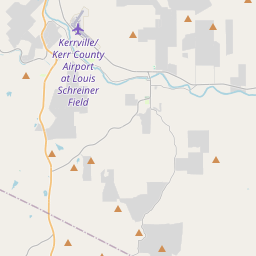Mosty Brothers Nursery
Historical marker location:






MOSTY BROTHERS NURSERY
A son of Belgian immigrants, Leander A. Mosty worked as a cattle driver and broker in Kansas before migrating to Kerr County in 1897. Sensing a market for fruit and pecan trees in the sparsely treed area, Mosty and his wife, Elizabeth (Bean), a Lampasas native, moved their family to a tract along the Guadalupe River, where the Kerrville orchards and nursery, later known as Mosty Brothers Nursery, began in 1898. After being certified by the state of Texas in 1907, the nursery expanded to center point the next year. Along with several ornamental shrubs, Mosty developed new varieties of cling peach, freestone peach, and pecan trees, all of which bear the Mosty name.
After his death in 1917, Mosty’s sons Lee and Harvey turned the business into one of the largest wholesale nurseries in the southwest with one of the region’s largest greenhouses. In 1927, Lee Mosty built his family an eight-room house in the center point property’s pecan orchard. In the 1930s, Lee and Harvey helped organize the Texas association of nurserymen. They also provided native plants to landscape the Texas centennial central exposition grounds, now the Texas State Fair Grounds, in Dallas. After Lee’s death in 1964, his sons Robert Lee, Raymond, and C.H. (Scott) continued to develop their business and support the Texas horticulture industry. The Kerrville nursery closed in 1985, but Mosty family descendants, now in the fifth generation, continue to operate the center point location. One of the community’s iconic businesses since 1908, the nursery continues to contribute to the economy and culture of center point.
(2014)
MARKER IS PROPERTY OF THE STATE OF TEXAS
As one of the most visible programs of the Texas Historical Commission (THC), historical markers commemorate diverse topics in Texas history, including: the history and architecture of houses, commercial and public buildings, religious congregations, and military sites; events that changed the course of local and state history; and individuals who have made lasting contributions to the state, community organizations, and businesses.
In the late 19th century, Texas became known for its cattle drives, in which cowboys would move herds of cattle from Texas to railheads in Kansas and other northern states. The cattle drives were dangerous and difficult work, but they played a key role in the development of the American cattle industry.
In 1845, Texas became the 28th state of the United States, and Kerr County was officially formed in 1856. It was named after James Kerr, a major in the Texas Revolution and a member of the Republic of Texas Congress. The county's early economy was centered around agriculture, with ranching, farming, and timber production being the main industries.
During the Civil War, Kerr County, like many other parts of Texas, was divided in allegiance between the Union and the Confederacy. The area experienced occasional raids and skirmishes, but overall remained relatively peaceful during the conflict. After the war, the county began to recover and flourish economically, with the arrival of the railroad in 1887, which improved transportation and access to markets.
The 20th century brought further growth and development to Kerr County. The discovery of oil in the nearby counties stimulated the economy, and Kerrville, the county seat, became a regional hub for commerce and services. The establishment of Schreiner Institute, now Schreiner University, in 1923, brought higher education opportunities to the area. Today, Kerr County continues to attract residents and visitors with its natural beauty, historical landmarks, and vibrant community life.
Kerr County Timeline
This timeline provides a condensed summary of the historical journey of Kerr County, Texas.
- 1856 - Kerr County is officially established on January 26.
- 1857 - The first county government is organized in October.
- 1870 - The city of Kerrville is founded as a trade center for the surrounding area.
- 1876 - Kerrville becomes the county seat of Kerr County.
- 1888 - The San Antonio and Aransas Pass Railway reaches Kerrville, stimulating growth in the area.
- 1890 - Kerrville is incorporated as a city.
- 1930 - The Camp Meeting Association of the Methodist Episcopal Church South establishes a permanent site for summer encampments in Kerrville, which later becomes the Mo-Ranch conference center.
- 1962 - The Kerrville Folk Festival is first held, becoming one of the longest continuously running music festivals in the United States.
- 1998 - The Kerrville-Schreiner State Park is opened to the public.